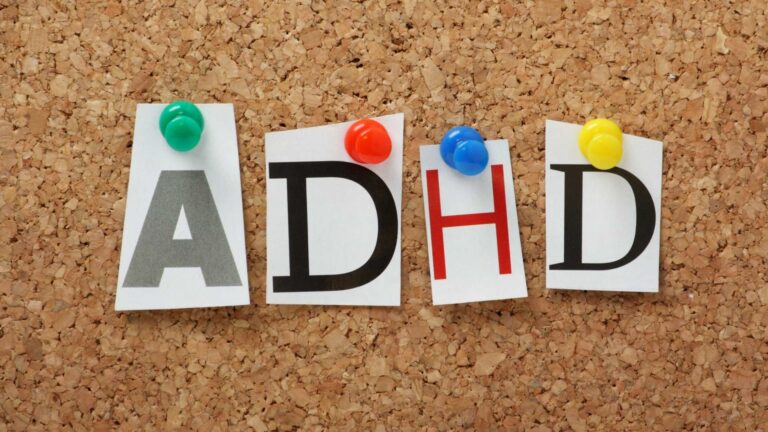Table of Contents
What is the difference between nonverbal and nonspeaking autism?
When we talk about autism, one of the most misunderstood aspects is communication, especially when it comes to Nonverbal and Nonspeaking Autism. For many people, speech is seen as the primary way we express ourselves. But for countless individuals with autism, communication looks very different—yet, it is just as meaningful.
While both terms are often used interchangeably, they aren’t the same. “Nonverbal autism” has historically described individuals who do not speak, but it can sometimes overlook other forms of communication they use. “Nonspeaking autism” is now the preferred and more accurate term, recognizing that many people with autism communicate effectively—just not through speech.
As we dive into this topic, it’s essential to challenge outdated ideas and uplift a more inclusive understanding. Keep reading this blog by ABA Centers of Rhode Island, where we explore seven common myths about nonverbal and nonspeaking autism, and uncover the truths that can foster empathy, support, and connection.
Communication Isn’t Just About Speech
Being able to speak isn’t the same as being able to communicate. Still, many individuals with nonspeaking autism are often overlooked or underestimated simply because they don’t use spoken words. This misunderstanding not only contributes to harmful stereotypes but also limits access to the tools and support these individuals need to thrive.
It’s time we shift the conversation—away from assumptions, and toward acceptance. Let’s start with some of the most persistent myths.
Myth 1: “Nonverbal Means They Don’t Understand Anything”
This misconception is one of the most damaging myths about nonspeaking autism. In truth, many individuals who don’t speak are highly aware of their surroundings and understand spoken language. This distinction between receptive language (understanding others) and expressive language (being able to talk) is crucial.
A recent study published in Frontiers in Psychiatry found that a significant percentage of nonspeaking individuals with autism have intact receptive language skills, but face barriers in producing speech due to neurological differences. In other words, just because someone doesn’t speak doesn’t mean they’re not listening—or understanding.
Myth 2: “If Someone Starts Talking, They Were Never Really Nonverbal”
Many families are surprised to see language emerge later in a child’s development. But this doesn’t mean the child was never nonspeaking. Language development is not always linear, especially for individuals with autism.
Some may gain spoken language in adolescence or adulthood, while others may remain nonspeaking their entire lives. A comprehensive review in Education Sciences emphasizes that gains in communication, whether through speech or alternative means, should never invalidate previous diagnoses or labels.
Myth 3: “Nonspeaking People Can’t Communicate”
This couldn’t be further from the truth. Communication happens in many forms: AAC (Augmentative and Alternative Communication) devices, sign language, gestures, facial expressions, and even art or movement.
According to researchers from Frontiers in Integrative Neuroscience, technology is expanding opportunities for people with nonverbal autism to express themselves like never before.

From tablet-based speech apps to eye-tracking devices, these tools are giving voice to individuals who were once thought to have none.
It’s not a lack of communication; it’s a lack of understanding how to listen differently.
Myth 4: “They Just Need to Try Harder to Talk”
Let’s be clear: speech is not a matter of willpower. For people with nonverbal and nonspeaking autism, the ability to speak may be limited by neurological, motor, or sensory challenges. Suggesting they “try harder” is like asking someone in a wheelchair to stand up and walk.
This myth fails to recognize the science behind speech production in autism. The National Library of Medicine underscores that apraxia of speech—a motor speech disorder—is common among nonspeaking individuals with autism, and no amount of pressure or effort can override those neurological roadblocks.
Instead of demanding speech, we should be encouraging communication in whatever form works best.
Myth 5: “ABA Therapy Forces Speech on Nonspeaking Individuals.”
This perception stems from outdated practices. In reality, modern ABA therapy prioritizes functional communication, not just vocal speech. That might include learning to use a communication device, pointing to icons, or using signs to express needs.
At ABA Centers of Rhode Island, our approach respects the individual’s comfort, autonomy, and communication style. The goal isn’t to force speech, it’s to empower individuals to connect, self-advocate, and express themselves in the way that works best for them.
Early intervention, especially when personalized, can be transformative for children and teens with autism, nonspeaking or otherwise.
Myth 6: “They Don’t Have Thoughts or Emotions Because They Can’t Express Them”
This heartbreaking myth has led to generations of misunderstood people with nonspeaking autism. In truth, many individuals have deep emotional lives, complex thoughts, and strong opinions; they can’t express them using speech.
Some of the most powerful voices in the autism community come from nonspeaking self-advocates who use AAC to write, type, or create art. Their words reveal creativity, intellect, and sensitivity. As experts on this matter emphasize, it’s crucial to separate speech ability from cognitive capacity.
Everyone deserves to be seen as a whole person, regardless of how they communicate.
Myth 7: “Nonverbal and Nonspeaking Mean the Same Thing”
Though often used interchangeably, these terms carry different implications. “Nonverbal” has historically suggested a complete absence of language, while “nonspeaking” acknowledges that the individual may communicate in other ways—just not through spoken words.
Advocacy groups and professionals now prefer the term nonspeaking autism because it’s more respectful and accurate. Choosing the correct language promotes inclusion and dignity.
Words matter, especially when they shape how we support and relate to others.
Communication Takes Many Forms

At the heart of it all, Nonverbal and Nonspeaking Autism reminds us that speech is only one way to connect. When we let go of limiting beliefs, we open the door to understanding, compassion, and connection in new and powerful ways.
Whether you’re a parent, educator, therapist, or friend, remember: people with nonverbal autism or nonspeaking autism are not broken—they communicate differently. And with the proper support, they can flourish.
At ABA Centers of Rhode Island, we provide diagnostic evaluations, early intervention, and ABA therapy tailored to the children’s specific needs, teens, and families affected by autism. Our focus is not just on milestones, but on meaningful progress, connection, and empowerment.
Ready to Support a New Way of Communicating?
If you’re looking for answers, hope, or proper support, we’re here to help. Contact ABA Centers of Rhode Island today to discover more about our services, schedule a free consultation by clicking here, or call us at (855) 922-4184.
Learn how ABA therapy can help your child find their voice—spoken or otherwise, with ABA Centers of Rhode Island.








